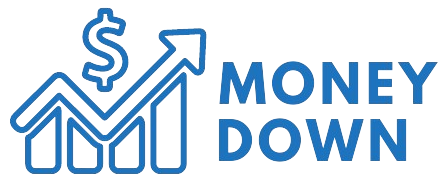Fortunately, the investment in foreign shares for Canadians has never been easier. The trading fees are pressed down for stocks which are listed on the US and international stock exchanges, and a whole bunch of funds with low fairytables (ETFs) are invested in foreign shares.
In addition, when you are involved in certain global stocks – e.g. In the primary quarter of the 2025, the Canadian CDR emitters, CIBC and BMO, expanded their list of CDRs beyond the US shares to be listed only in European and Japanese markets. Around 100 leading global corporations at the moment are available in CDR form. In other words, you’ll be able to do world fittings without leaving the comfort of the Canadian markets.
The ETF Screener tool from Moneysense
What is a depot receipt?
A deposit receipt is a security that’s issued by a bank and is traded on a stock exchange, just like stocks and ETFs. A CDR is just invested in a single underlying stock and thus serves as a proxy for possession of this share. In fact, the depot pays Corporate management (With some restrictions – see below). Why take care of this complicated structure? For certain investors, the possession of deposits themselves offers benefits as an alternative of the shares.
CDRS, first Started by Cibc In 2021, American depot cuts (ADRS) were led within the foreground. These US representatives of foreign stocks gave American investors access to international shares, without the usually higher trade costs, foreign exchange fees and currency risks related to the direct attitude of those shares. CDRs should offer Canadian investors the identical comfort and value benefits, just for stocks that were traded outside of Canada, including US shares. CDRS act with the CBOE Canada Exchange.
What are the potential benefits of CDRS?
The investment in CDRS has three essential benefits in comparison with the direct purchase of foreign stocks:
- Depending on the fees, your brokerage fees could be delivered with lower trading costs than the underlying stocks, since CDRS are acted more in national than in foreign markets and avoid the foreign exchange fees of the brokers.
- CDRS normally cost lower than $ 50, which is simpler to purchase than the whole foreign stocks that may cost a whole bunch and even 1000’s of dollars. For example, when you pay USD for a single Netflix share $ 950, you’ll be able to essentially receive the identical commitment by buying CIBCS Netflix CDR (NFLX) for CBOE Exchange for under 40 CAD. In this regard, CDRs resemble the broken shares offered by some brokers.
- CDRs are hostile to Canadian dollars. That means you purchase it at a price that reflects your equity on the exchange rate that day (just like a CAD Hedged ETF). After that, nevertheless, price movements are secured in an effort to pursue the heights and depths in the midst of the stock in his home currency. This implies that there is no such thing as a currency risk, and you’ll enjoy similar capital gains (and losses) as when you are investing in US dollars, euros or yen.
What are the disadvantages of CDRS?
Canadian investors should pay attention to these details before buying CDRS:
- All of those benefits are charged for a fee, albeit a small one. CIBC and BMO don’t charge any direct administrative fees for his or her CDRS, but earn a discount in currency insurance that flows into them. BMO says The annual security fee is “usually less than 0.5% per year”. According to the CIBC, the foreign exchange distribution divider has a maximum of 0.8% per 12 months for its global CDRs.
- In the 4 years wherein CDRS can be found in Canada, their performance has not followed the shares they imitate exactly, which is especially because of the prices and the wrong nature of the safety process. The CDRs of several remarkable shares have remained a couple of percentage points per 12 months.
- Although they’re listed in Canada, CDRs are treated for tax purposes similar to foreign stocks. In taxable accounts, CDRS dividends don’t profit from the dividend tax credits similar to Canadian shares. CDR dividends are also subject to taxes within the countries wherein the underlying stock trading are traded. For example, 15%when the underlying stocks are Americans. However, this is not any different than if you will have directly owned direct stocks.
- CDR owners don’t receive any automatic voice materials and the opposite documents that the shareholders perform. If you should take part in corporate governance, you regularly need to make your voting intentions known to the CDR issuer before the tip of the vote. You can in a roundabout way provide your securities to a purchaser for a takeover offer on a purchaser, as an alternative you will have to sell at the present market price before completing the business.
The best online brokers, classified and compared
Where can I purchase CDRs in Canada?
You can generally buy CDRs by buying Same broker Or investment consultants with whom you purchase shares and ETFs. Since practically all CDRS represent coveted multinational stocks, liquidity mustn’t be an issue.
However, be sure that that your orders are properly referred to – the ticker symbols utilized by CDRS are sometimes just like those of the underlying stocks listed abroad. For example, CBCS Lululemon Athletica CDR from Lulu on the CBOE exchange, similar to the Lulu stock trade at Nasdaq. The first brings you back $ 15 Canadian, the second over $ 300.

